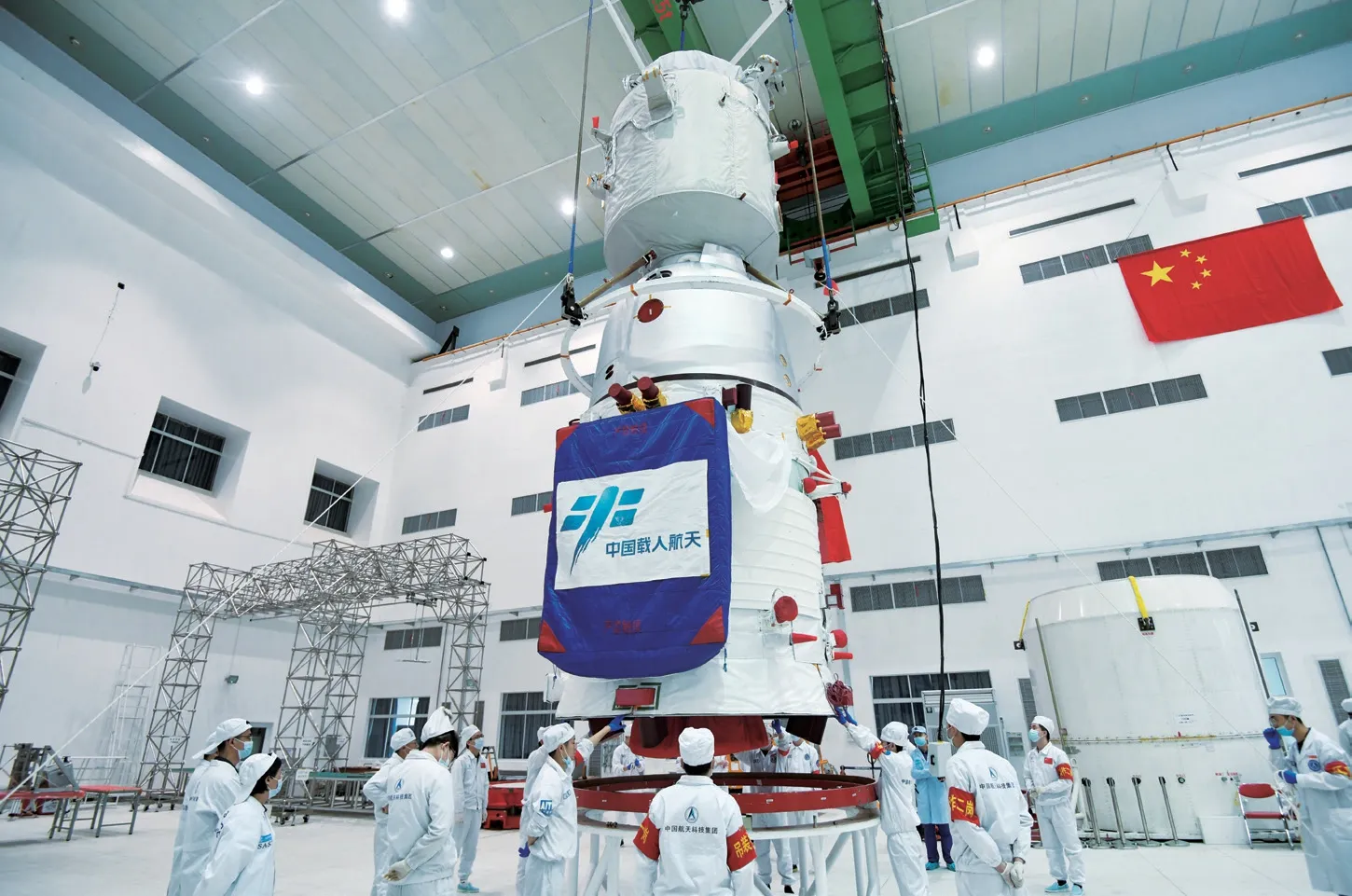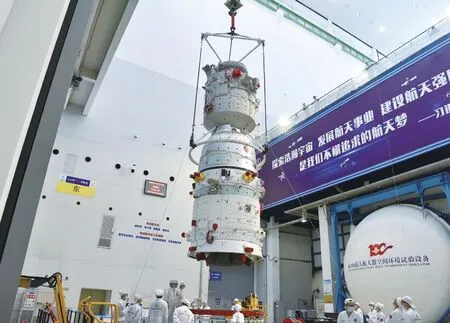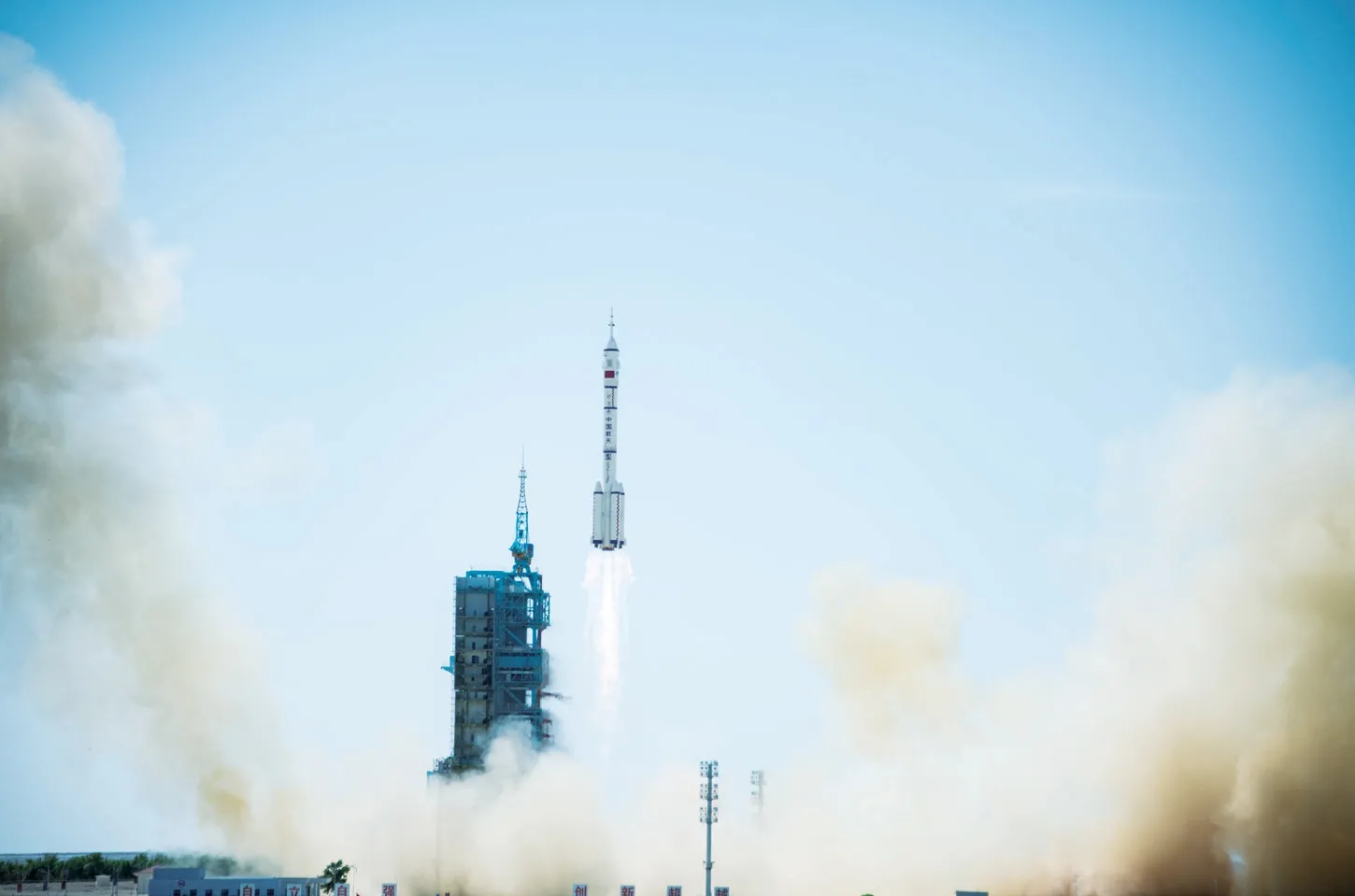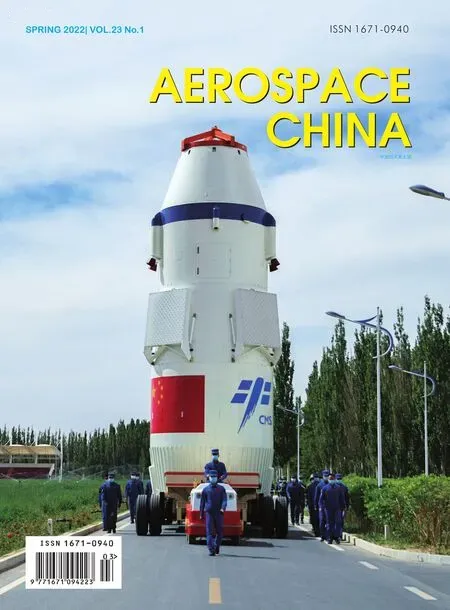A Brief Introduction to China Manned Space Program Missions
2022-08-18
In September 1992,the Chinese government made a decision to implement the manned space program and prescribed a three-step strategy of development.
The first step was to launch a manned spaceship,establish primary integrated experimental manned spacecraft engineering capability,and conduct space application experiments.
The second step was to achieve technological breakthroughs in extravehicular activities including space rendezvous and docking of manned spaceships and spacecrafts,launch a space lab,and provide an environmental solution for space applications of a certain scale with human operation on a shortterm basis.
The third step was to establish a space station,and provide an environmental solution for space applications of larger scale with human operation on a long-term basis.
MISSIONS
Shenzhou 1
During November 20-21,1999,the first unmanned flight test under the China Manned Space Program was achieved.It was the first flight test of the LM-2F carrier rocket,so the main purpose was to examine the performance and reliability of the carrier rocket,and,by launching an unmanned spaceship,verify the performance of key technologies and the system design relating to re-entry control as well as the operational harmony of the whole system including launching,tracking,control,communication,landing and the recovery facilities.The smooth completion of this test was an important milestone in the space history of China,and indicated that China had made a major breakthrough in manned space technologies.

Figure 1 Shenzhou 14 under development
The Shenzhou 1 spaceship was composed of an orbital module,a re-entry module and a propulsion module.The orbital module was the place where astronauts would live and work;the re-entry module was the control center of the spaceship,through which astronauts travel to space and then returned to the Earth;and the propulsion module,also called the power module,provided power for spaceship during the course of the in-orbit flight and return to the Earth.The total length of three modules of the spaceship was about 8 m,with a cylindrical diameter of 2.5 m,a maximum diameter of the coneshaped section of 2.8 m,and a total mass of 7,755 kg.
On November 20,1999,the Shenzhou 1 spaceship was launched on the LM-2F carrier rocket from the Jiuquan Satellite Launch Center (JSLC).Ten minutes after the ignition,the spaceship separated from the rocket,and then precisely entered its preset orbit.On November 21,the ground command center sent the re-entry command to Shenzhou 1,and the spaceship returned,smoothly landed at the landed site in the middle of Inner Mongolia .
Shenzhou 2
During January 10-16,2001,the second unmanned flight test under the China Manned Space Program was completed.This test fully examined the operation and adaptability of the overall engineering for the program along with the technical performance for each system.Experiments in the fields of space life science,space material,space astronomy and space physics in a microgravity environment were conducted and considerable data relating to manned spaceflight as well as other data and samples from scientific tests were obtained.As planned,the orbital module remained in its orbit for about half a year,in order to conduct additional scientific experiments.
Shenzhou 2 was the first formal unmanned spaceship of China.As compared with the Shenzhou 1 spaceship,the Shenzhou 2 spaceship had an expanded system structure,and its technical performance was improved.The technical status of the Shenzhou 2 spaceship was almost the same as that required for a manned spacecraft.
Like its predecessor the Shenzhou 2 spaceship was launched by a LM-2F carrier rocket from the JSLC on January 10,2001,and then entered its preset orbit.The spaceship flew around the Earth for 108 orbits,flying in space for near 7 days,smoothly completing the preset space-related scientific and technical tests.
Shenzhou 3
During the period from March 25,2002 to April 1,2002,the third unmanned flight test under the China Manned Space Program was conducted.When the spaceship was flying in orbit,each system worked normally,all preset scientific experiments and exploration tasks were completed as planned,and the flight test was a complete success.The successful completion of this test indicated that important developments have been achieved for the China Manned Space Program,and that China’s manned space technologies had become increasingly mature thus laying a firm foundation for the ultimate realization of manned spaceflight.In addition,the successful completion of this test also indicated that the implementation of the space-related scientific and development of space resources by China had entered a new phase.

Figure 2 LM-2F is waiting for launch
The Shenzhou 3 spaceship was the qualified unmanned spacecraft,of which the technical state was the same as that of the planned manned spacecraft.Compared with the second spaceflight test,this test was equipped with an escape and emergency rescue capability,the spaceship has the feature enabling emergency rescue of the crew during the prelaunch period,and initial launch phase.The standby parachute subsystem was improved.Also the carrier rocket had a failure detection capability and escape function,while the control subsystem adopted redundancy techniques.A test dummy,human metabolism simulating device,medical monitoring equipment and radiation environment monitoring equipment were installed in the spaceship to monitor critical parameters during flight.In addition,other tests relating to material science,life science and space environment monitoring were conducted during the flight.
The Shenzhou 3 spaceship was launched by an improved LM-2F carrier rocket from the JSLC on March 25,2002,and then entered its preset orbit successfully.When the spaceship was flying in orbit,the Yuanwang 1,2,3 and 4 space tracking ships located in the Atlantic Ocean,the Pacific Ocean and the Indian Ocean as well as ground tracking &control stations,successfully conducted the tracking and control for the spaceship under the control of the Beijing Spaceflight Control Center.
Shenzhou 4
During the period from December 30,2002 to January 5,2003,the fourth unmanned flight test under the China Manned Space Program was completed successfully.The various instruments and equipment on the spaceship worked normally during the flight,and considerable valuable flight test data and scientific results were obtained.
As the third qualified unmanned spacecraft under the China Manned Space Program,the Shenzhou 4 spaceship was developed on the basis of the successful implementation of Shenzhou 1,2 and 3 flights.Its equipment,function and technical performance were almost the same as those of the previous manned spaceships.Its length was about 7.4 m,maximum diameter 2.8 m,and the total mass 7,794 kg.
The Shenzhou 4 spaceship was launched by the LM-2F carrier rocket from the JSLC on December 30,2002.The spaceship flew in the space for 6 days and 18 hours and flew around the Earth for 108 orbits.It successfully completed several hundred activities,including the unfolding of solar cell arrays,operations in orbit,the determination of attitude,the change of orbit and the orbit maintenance (for two times).Then the Shenzhou 4 spaceship accurately landed at the landing site in the middle of Inner Mongolia after completing all the pre-set space-related tests on January 5,2003.
Shenzhou 5
From October 15-16,2003,the first manned spaceflight task under China Manned Space Program was conducted successfully,sending the Chinese astronaut YANG Liwei into space for the first time in Chinese history,it was a new milestone in the development of China’s space program in the 21st century.The purpose of this mission was to fully examine the manned environment,obtain data relating to the living environment and safety of the astronaut while fully examining the operating performance,reliability and safety of each system as well as the interaction among various systems.
The Shenzhou 5 manned spaceship was China’s first manned spacecraft developed on the basis of an unmanned spacecraft,and had the ability to conduct automatic return in an emergency or manual-control return.
As with previous flights the Shenzhou 5 manned spaceship was launched on a LM-2F carrier rocket from the JSLC on October 15,2003.During the flight,the ground kept in close contact with astronaut YANG Liwei to keep abreast of his physical condition through the physiological telemetry parameters.At the same time,YANG Liwei monitored the execution of important commands and the operation of the spacecraft during the flight.YANG Liwei completed the relevant operations in accordance with the preset procedures.
The re-entry module of the Shenzhou 5 manned spaceship landed safely on the grassland of central Inner Mongolia on October 16,2003.After 21 hours and 23 minutes’ flight,YANG Liwei stepped out of the re-entry module by himself and was in good condition.The orbital module remained in orbit for 707 days,carrying out considerable scientific experiments and accumulating experience for the development and manufacture of long-life spacecraft.
Shenzhou 6
During October 12-17,2005,the Shenzhou 6 manned spaceflight mission under China Manned Space Program was successfully conducted.The main purpose of this mission was to master the technology relating to a multi-person and multi-day on-orbit manned spaceflight,carry out manned space-related scientific experiments,verifying the function and performance of various systems,to further improve the safety and reliability,while accumulating experience for a prolonged stay in space(working and living),thus establishing the conditions and laying the foundation for the sustainable development of the China Manned Space Program.This mission demonstrated China had completed another major achievement in manned spaceflight technologies.
A LM-2F carrier rocket launched from the JSLC on October 12,2005,sent the Shenzhou 6 spaceship,together with the astronauts FEI Junlong and NIE Haisheng into space.
During the flight,the two astronauts monitored the implementation of important commands and the operating conditions of the spacecraft,reported the relevant status to the ground,re-sent the relevant commands,conducted an in-orbit anti-interference test,space-ground communication tests,operation of camera and maritime satellites,and implemented a series of key control commands including altitude adjustment,separation between orbital module and re-entry module,braking and ignition.
The re-entry module of Shenzhou 5 manned spaceship landed safely on the landing site on October 17,2005,successfully completing the manned spaceflight mission.
Shenzhou 7
During September 25-28,2008,China successfully conducted the Shenzhou 7 manned spaceflight mission.The main purpose of this mission was to implement the first extravehicular activity (EVA) by a Chinese astronaut,master the technologies relating to EVA,and conduct space-related scientific tests such as concomitant satellite flight and satellite data relay.During the flight,astronaut ZHAI Zhigang smoothly completed his EVA.China made breakthroughs in EVA technology for the first time,and realized a major leap in the development of space technologies.This mission signified that China has become the third country in the world which independently mastered the key technologies relating to EVA.
A LM-2F carrier rocket launched from the JSLC on September 25,2008,sent the Shenzhou 7 spaceship,together with the astronauts ZHAI Zhigang,LIU Boming and JING Haipeng into space.
The Shenzhou 7 spaceship safely landed at the main landing site in Inner Mongolia on September 28,the three astronauts were all in good condition,and the Shenzhou 7 manned spaceflight mission was successfully completed.
Tiangong 1/Shenzhou 8
China conducted the Tiangong 1/Shenzhou 8 rendezvous and docking mission on November 3,2011.
Tiangong 1,an experimental space laboratory,was launched on September 29,2011.It was mainly used to carry out the rendezvous and docking test,so as to master the technologies relating to the rendezvous and docking and accumulate experience for the construction,management and operation of a space station.The weight of Tiangong 1 was about 8 tons,and its main body was a short and thick cylinder,with a docking port on its front and rear ends.A two-module structure was adopted,one as an experiment module and the other as a resource module.The experiment module was composed of an enclosed front cone-shaped section,a cylindrical section and a rear cone-shaped section.
The successful completion of the Tiangong 1/Shenzhou 8 rendezvous and docking mission indicated that China had made a major breakthrough in rendezvous and docking technology.It represented a big stride in China’s space technological capabilities and a critical milestone for China’s manned space industry.
Tiangong 1/Shenzhou 9
On June 18,2012,China conducted the Tiangong 1/Shenzhou 9 manned rendezvous and docking mission.The objectives of the mission were as follows:to launch the Shenzhou 9 manned spaceship and carry out an auto and a manual rendezvous and docking respectively with the Tiangong 1 target vehicle,thus verify manual rendezvous and docking technology for the first time and further verifying auto rendezvous and docking technology;to comprehensively verify the function and performance of Tiangong 1 to meet the life support and work needs for astronauts as well as the assembly unit technology,realizing for the first time the requirements for crew transportation and cargo re-supply to and from an orbital vehicle;to further test the function and performance of the spaceship,rocket and target vehicle as well as the interaction of different systems in the engineering project.
The Shenzhou 9 manned spaceship was launched by a LM-2F carrier rocket on June 16,2012 from the JSLC,sending the three astronauts JING Haipeng,LIU Wang and LIU Yang into space.During the 13 days’ flight in orbit,the Shenzhou 9 spaceship conducted one automatic rendezvous and docking test and one manual rendezvous and docking test.
On June 18,astronaut JING Haipeng successfully opened the door to the Tiangong 1 lab module and then the astronauts transferred into it.It marked the success of the Chinese astronauts’ first visit to Tiangong 1.
Shenzhou 9 started its re-entry procedure and landed on the Inner Mongolia main landing site on June 29.Tiangong 1 maneuvered to a long-term operational orbit.The Tiangong 1/Shenzhou 9 manned rendezvous and docking mission was completed successfully.
Tiangong 1/Shenzhou 10
In June,2013,China conducted the Tiangong 1/Shenzhou 10 manned spaceflight mission.The objectives of the mission were as follows:to launch the Shenzhou 10 manned spaceship and provide a crew and cargo transportation service to the orbit operational Tiangong 1 target vehicle,thus further verifying rendezvous and docking technology as well as the function and performance of the space transportation system;to further verify the support capability of Tiangong 1 for life support,the work and health of astronauts as well as the capabilities of astronauts in carrying out their space mission;to conduct an astronaut space environment adaptability and space operation ergonomics study,conduct space science experiments,spacecraft on-orbit maintenance experiments,and the first space class by an astronaut;to further test the function and performance as well as the interoperation of various systems in the engineering project.
On June 11,2013,Shenzhou 10 spaceship,with 3 astronauts NIE Haisheng,ZHANG Xiaoguang and WANG Yaping aboard,was launched atop a LM-2F carrier rocket from the JSLC and then entered its orbit accurately.The Shenzhou 10 spaceship completed automatic rendezvous and docking with the Tiangong 1 lab module via remote guidance from the ground and the spaceship’s autonomous flight control on June 13 after orbital injection.
At 8:26 Beijing time,June 23,in close collaboration with ZHANG Xiaoguang and WANG Yaping,crew commander NIE Haisheng manually operated Shenzhou 10 to undock from Tiangong 1,and berthed at a distance away from the space lab.At 10:07 Beijing time,the Shenzhou 10 spaceship was docked with Tiangong 1 again successfully,and then the astronauts entered the Tiangong 1 lab module again.
At 07:05 Beijing time,June 25,the Shenzhou 10 spacecraft was undocked from Tiangong 1 automatically and maneuvered to a specified distance away.Later on,Shenzhou 10 underwent orbital transfer control and flew around Tiangong 1.During the process,under the precise control of ground staff,the Shenzhou 10 changed to its forward-flying position while Tiangong 1 turned to its backward-flying position.Then controlled from the ground,the Shenzhou 10 approached Tiangong 1,successfully completing a near-distance rendezvous.China’s first spacecraft fly-around rendezvous test achieved its desired result.
At 07:19 Beijing time June 26,the Shenzhou 10 re-entry procedure was initiated,and the reentry module landed precisely at its preset targeting area at 08:07 Beijing time.Then the Tiangong 1 space lab reentered its orbit for long-term operation.
During its on-orbit flight,Shenzhou 10 carried out a series of space science experiments and technical tests.The three astronauts lived and worked well during the orbital mission.
Space Laboratory
The Space Laboratory Program consisted of four missions,including the maiden launch of the LM-7 rocket,as well as missions of the space lab Tiangong 2,manned spaceship Shenzhou 11 and cargo spacecraft Tianzhou 1.
In June 2016,the first LM-7,China’s new-generation medium-lift launch vehicle,successfully took off from the Wenchang Space Launch Center,greatly improving China’s capability of access to space and laying a solid foundation for follow-on missions.
In September 2016,the space laboratory Tiangong 2 was successfully launched from the JSLC.During the mission,more than 60 scientific experiments and technology tests were conducted,leading to a large number of achievements at an international advanced level and significant application benefits.Valuable experiences were accumulated providing critical inputs to the subsequent construction and operation of China’s space station.
In October 2016,the manned spaceship Shenzhou 11 was launched into space atop a LM-2F launch vehicle with astronauts JING Haipeng and CHEN Dong onboard.The successful rendezvous and docking with the space laboratory Tiangong 2 demonstrated the viability of astronauts’ medium-term stay in space.During the mission,a number of human-attended experiments were conducted,including space medical,science experiments and on-orbit maintenance technology tests.
In April 2017,the cargo spacecraft Tianzhou 1 was successfully launched from the Wenchang Space Launch Center.The mission marked a successful demonstration in terms of cargo transportation capacity and in-orbit propellant refueling technologies,thus representing the successful completion of the second step of the China Manned Space Program.
LM-5B Maiden Flight
The LM-5B carrier rocket made its maiden flight from the Wenchang Space Launch Center on May 5,2020 with payloads weighing about 22 tons.The flight has verified the overall design and technologies of the new rocket and marked the beginning of the third stage in China Manned Space Program.
Tianhe Core Capsule
China launched the core capsule of its space station from the Wenchang Space Launch Center on April 29,2021 using a LM-5B carrier rocket.
The successful launch of the Tianhe core capsule marked the commencement of establishing China Space Station and laid a solid foundation for the following key technology verification and space station construction.
Tianzhou 2 Cargo Spacecraft
The Tianzhou 2 cargo spacecraft was launched on a LM-7 carrier rocket from the Wenchang Space Launch Center on May 29,2021.It then docked with the Tianhe core capsule,conducted autonomous refueling operations and then carried out some tests on equipment.
This was the first operational flight of the space station’s cargo transport system,which consists of the Tianzhou cargo spacecraft and the LM-7 carrier rocket.

Figure 3 Maiden flight of LM-5B

Figure 4 Artist’s concept of Tianzhou 2
Shenzhou 12 Manned Spacehip
The Shenzhou 12 spaceship,with 3 astronauts NIE Haisheng,LIU Boming and TANG Hongbo was launched atop a LM-2F carrier rocket from the Jiuquan Launch Center on June 17,2021.
It was China’s seventh manned space mission,as well as the first manned space mission of the third stage of China Manned Space Program.
Tianzhou 3 Cargo Spacecraft
A LM-7 carrier rocket was launched from the Wenchang Space Launch Center on September 29,2021,carrying the Tianzhou 3 cargo spacecraft into orbit.
The spacecraft entered a low Earth orbit,unfolded its solar panels and began to execute a rapid autonomous rendezvous and docking procedure with Tianhe,the space station’s core module.It was to deliver more supplies to the Tiangong space station and ensure that the three astronauts who were scheduled to spend six months on it in the next manned space flight mission can live and work comfortably.
This was the fifth launch mission in the key technology verification stage of China Space Station,as well as the second cargo spacecraft launched in the construction phase of the space station.
Shenzhou 13 Manned Spaceship
A LM-2F carrier rocket was launched from the JSLC on October 16,2021,carrying the three astronauts ZHAI Zhigang,WANG Yeping and YE Guangfu into space.6.5 hours after the launch,the spaceship docked with the radial port of the space station core module Tianhe,forming a combination with the Tianhe core module,Tianzhou 2 and Tianzhou 3 cargo spacecraft.

Figure 5 Shenzhou 12 spaceship is preparing for launch

Figure 6 Shenzhou 13 spaceship is preparing for launch
On April 16,2022,the return module carrying the astronauts touched down safely at the designated landing site in North China’s Inner Mongolia autonomous region.As the second crew members stationed in China Space Station,the three astronauts had worked and lived in the space station for 183 days,setting a new record for Chinese astronauts in orbit,while WANG Yaping has become China’s first female space-walker.The verification of key technologies of China Space Station has been completed.
During the flight,the astronauts were tasked with a wide range of assignments,such as performing spacewalks to install a small robotic arm onto a larger one;verifying key procedures and technologies like manual control of the robotic arms and robotic arm-assisted movement of station modules;checking the performance and capability of devices inside the station;and testing support instruments for the astronauts’ life support and work for long-term flights.They also conducted scientific experiments and technology demonstrations in space medicine,microgravity physics and other fields as well as delivered educational lectures for Chinese students.
Tianzhou 4 Cargo Spacecraft
The Tianzhou 4 cargo spacecraft was launched by a LM-7 carrier rocket from the Wenchang Space Launch Center and entered a low-Earth orbit of around 400 km on May 10,2022,officially initiating the construction phase of the space station.
The Tianzhou 4 cargo spacecraft docked with the space station combination after 6.5 hours’ flight through the autonomous rapid rendezvous and docking technique.
It was the first spacecraft in the construction phase of China Space Station,aiming to transport propellants and material to the space station and ensure the stable operation of the space station in orbit.
Shenzhou 14 Manned Spaceship
A LM-2F carrier rocket was launched from the JSLC on June 5,2022,sending the Shenzhou 14 spaceship with the three astronauts CHEN Dong,LIU Yang and CAI Xuzhe into space,marking the completion success of the first manned space launch mission of the construction phase of China Space Station.
The crew arrived at Tiangong at 20:50 Beijing time on June 5.They will make full use of the Tiangong station to conduct sophisticated,cutting-edge experiments and tests to advance science and technology.
The two space lab components,Wentian and Mengtian,will be transported to Tiangong’s orbit to dock with the Tianhe core module during the astronauts’ tenure.The crew will work with ground controllers to carry out the labs’ docking and repositioning operations.They will enter the Wentian and Mengtian labs to arrange and take care of the scientific equipment,use a new hatch and a new small robotic arm to conduct spacewalks,as well as perform a large number of scientific experiments and also offer educational activities for school children via live-streaming.
In addition,the astronauts will also need to prepare for the arrival of the Shenzhou 15 crew and Tianzhou 5 cargo spacecraft near the end of their journey.The space station will dock with two manned spaceships for the first time and realize crew rotation of six astronauts in orbit.(YU Weishu/)

Figure 7 Shenzhou 14 launched into space atop a LM-2F
杂志排行
Aerospace China的其它文章
- Shenzhou 12 Under Development
- The Development of Memory Alloy Satellite-Rocket Separation Device for Commercial Small Satellites
- The Development Status and Main Application Progress of China’s Ocean Satellites
- The Propulsion System of Shenzhou 13 Manned Spaceship
- Development of Solid Rocket Motor for Manned Launch Vehicle Escape System
- High Reliability LM-2F Launch Vehicle for Space Station Mission
